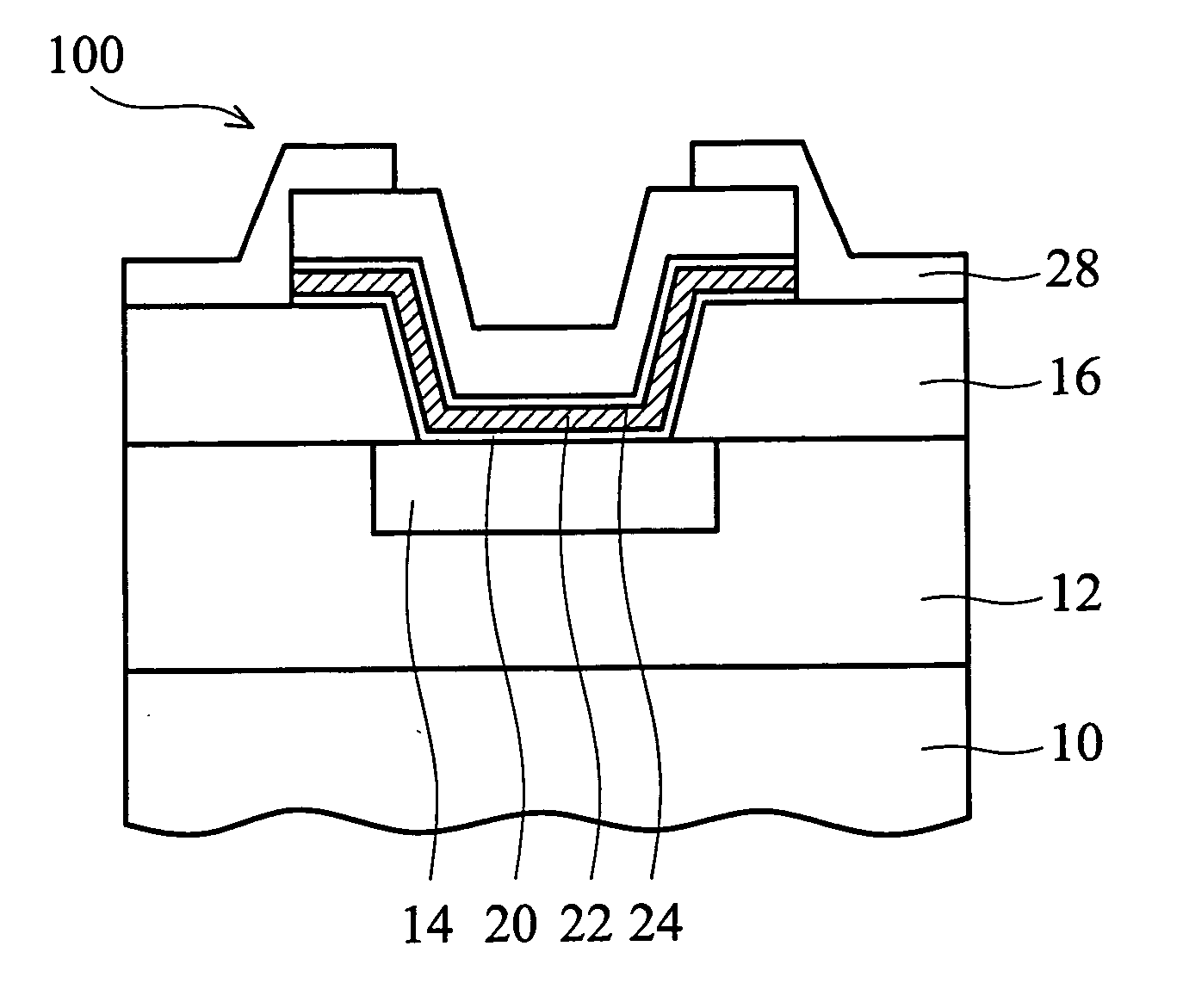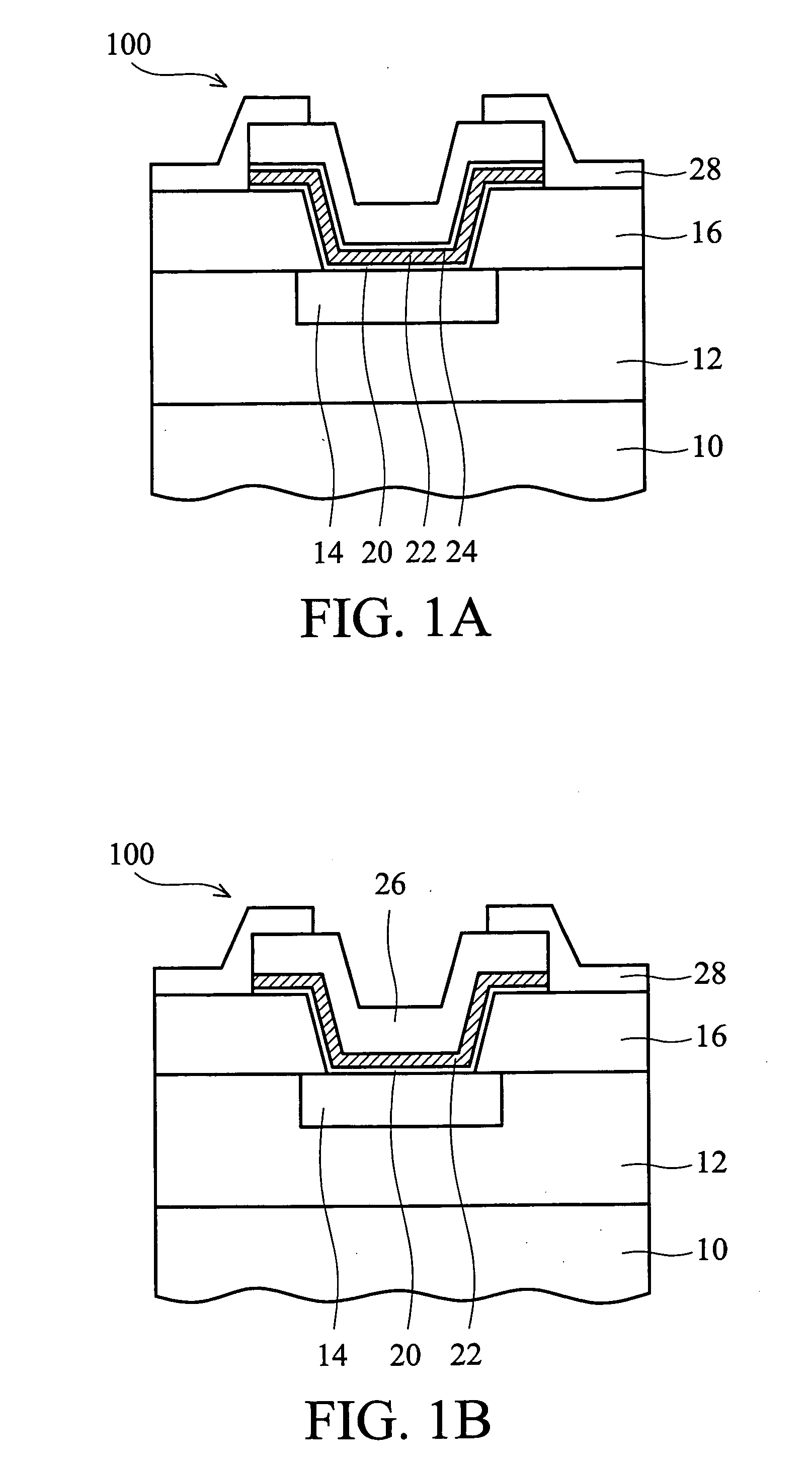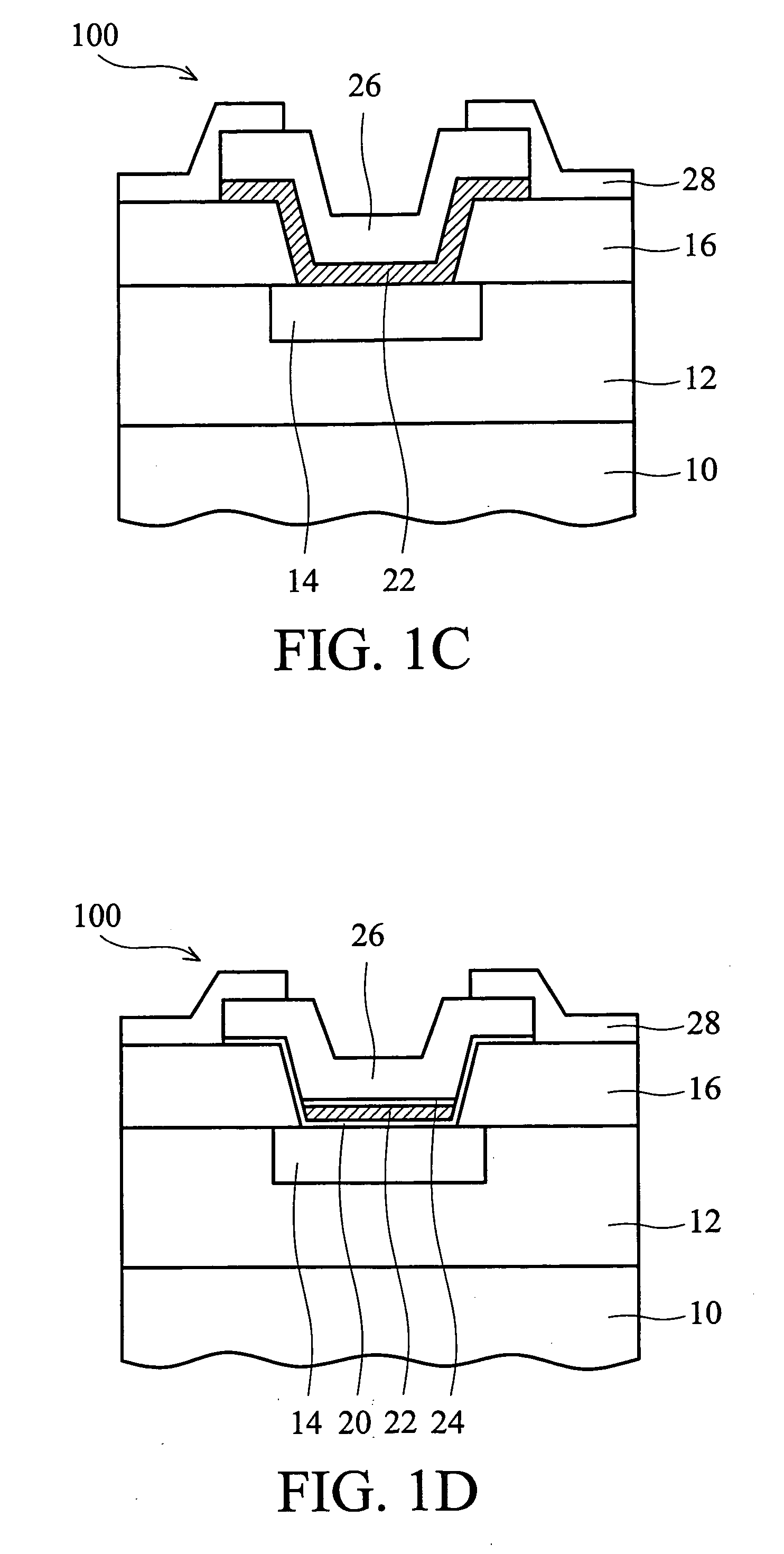Bond pad structure with stress-buffering layer capping interconnection metal layer
a bond pad and stress buffering technology, applied in the direction of semiconductor devices, electrical equipment, semiconductor/solid-state device details, etc., can solve the problems of affecting the bondability of wire connections, so as to prevent stress-induced damage to the bond pad structure
- Summary
- Abstract
- Description
- Claims
- Application Information
AI Technical Summary
Benefits of technology
Problems solved by technology
Method used
Image
Examples
Embodiment Construction
[0019] The present invention provides an improved bond pad structure for an integrated circuit chip. An embodiment of the present invention provides a bond pad structure having a stress-buffering layer between a top interconnection level metal layer and a bond pad layer to prevent stress-induced damages to the bond pad structure from WAT (e.g., wafer probing) and packaging impacts (e.g., applied forces and induced stresses in wire bonding, flip chip or other packaging technologies). The stress-buffering layer is preferably a conductive material having a specific property selected from the group consisting of Young's modulus, hardness, strength and toughness, greater than that of at least one of the top interconnection level metal layer and the bond pad layer. One embodiment of the present invention provides a bond pad structure having a stress-buffering layer between a terminal contact region of a top interconnection level copper-based layer and an aluminum-based bond pad layer on a...
PUM
 Login to View More
Login to View More Abstract
Description
Claims
Application Information
 Login to View More
Login to View More - R&D
- Intellectual Property
- Life Sciences
- Materials
- Tech Scout
- Unparalleled Data Quality
- Higher Quality Content
- 60% Fewer Hallucinations
Browse by: Latest US Patents, China's latest patents, Technical Efficacy Thesaurus, Application Domain, Technology Topic, Popular Technical Reports.
© 2025 PatSnap. All rights reserved.Legal|Privacy policy|Modern Slavery Act Transparency Statement|Sitemap|About US| Contact US: help@patsnap.com



